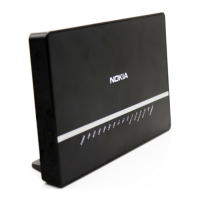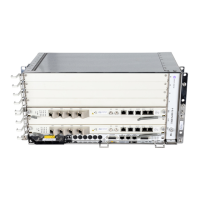FD 100/320Gbps NT and FX NT IHub Services Guide Virtual Private LAN Service
Issue: 13 3HH-11985-AAAA-TQZZA 177
correctly. This would result in a slow transition to a forwarding state (30 seconds).
For this reason, in the comp-dot1w mode, these BPDUs contain the port's port
priority vector (conforms to 802.1w).
The ISAM supports two BDPU encapsulation formats, and can dynamically switch
between these (again on a per-SAP basis):
• IEEE 802.1D STP
• Cisco PVST
5.4.7.2 Multiple Spanning Tree
The Multiple Spanning Tree Protocol (MSTP) extends the concept of the IEEE
802.1w Rapid Spanning Tree Protocol (RSTP) by enabling grouping and associating
of VLANs to Multiple Spanning Tree Instances (MSTI) that can be configured for the
m-VPLS and associated SAPs. Each MSTI can have its own topology, which
provides architecture enabling load balancing by providing multiple forwarding paths.
At the same time, the number of STP instances running in the network is significantly
reduced as compared to Per VLAN STP (PVST) mode of operation. Network fault
tolerance is also improved because a failure in one instance (forwarding path) does
not affect other instances.
The ISAM implementation of Management VPLS (m-VPLS) is used to group different
VPLS instances under single RSTP instance. Introducing MSTP into the m-VPLS
enables interoperating with the IP network and traditional Layer 2 switches in access
network and provides an effective solution for dual homing of many business Layer
2 VPNs into a provider network.
5.4.7.3 Redundancy Access to VPLS
The GigE MAN portion of the network is implemented with traditional switches. Using
MSTP running on individual switches facilitates redundancy in this part of the
network. In order to provide dual homing of all VPLS services accessing from this
part of the network, the VPLS PEs must participate in MSTP.
This can be achieved by configuring m-VPLS on VPLS-PEs (only PEs directly
connected to GigE MAN network) and then assign different managed-VLAN ranges
to different MSTP instances.
The m-VPLS will have SAPs with “no-tag” encapsulations (to receive, send, and
transmit MSTP BPDUs).

